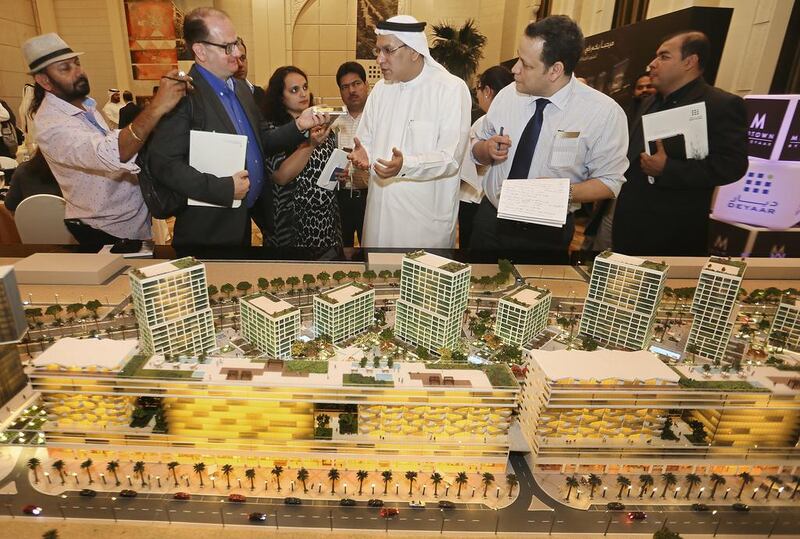The chief executive of Deyaar Development has dismissed concerns over the strength of the Dubai property market.
He made his remarks just days before the real estate industry gathers in Dubai for the annual Cityscape exhibition, which is being held against a backdrop of steep declines in property transactions.
The Deyaar chief executive Saeed Al Qatami also pledged to complete 90 per cent of the company’s 2,500-unit Midtown residential project in the International Media Production Zone district by the end of 2020.
A wave of new projects were launched in the first half of this year even as the prices for completed homes have fallen by about 10 per cent year-on-year, according to the property research firm ReidIn.
A new Cluttons report on the UAE property market says 41,000 new off-plan units have been announced so far this year – about half of those are at Nshama’s Town Square project.
Mr Al Qatami said that supply and demand for housing units fluctuated, but said that if Dubai’s population of more than 2.3 million grew at just one per cent a year, about 23,000 new homes per year would be needed. The actual growth rate of Dubai’s population last year was more than 5 per cent, according to Dubai Statistics Centre.
“It’s always difficult to forecast for the future. I remember in 2008, nobody has forecasted that financial crisis three months before,” he said.
“When you look at the fundamentals of real estate in the Dubai market, leasing and yields are at a good rate.”
The company launched the first of six phases of the Dh3.5 billion Midtown project’s Afnan District earlier this week.
It did not reveal prices for the 659 apartments being developed at Afnan, but Mr Al Qatami said that investors who buy them should be able to achieve rental yields of 11 to 12 per cent. Even if values dropped by 15 to 20 per cent, the apartments would still yield 7 to 8 per cent returns.
“We don’t feel that there will be a major concern in terms of demand and supply,” he said.
“It’s all about the project. If the project is viable, at a good location and the infrastructure is there, it adds value.
“I think what happened in 2008 was that yes, there was more supply, but developers, investors – even contractors – overexposed themselves. This time, I don’t think that’s the case.”
Cluttons’ head of research Faisal Durrani said that after increases in Dubai residential prices of 51 per cent in 2013 and a further 3.5 per cent last year, “the general view is that affordability thresholds have been breached”.
Rising prices, the introduction of the federal mortgage cap and the doubling of property registration fees means there “has been a massive step change in the total upfront equity that’s required” to buy properties. This has hit the villa sales market hardest, as prices are much higher.
Cluttons said that with deposits, bank and agency fees, a buyer of a Dh5.5m villa now needs to find about Dh2.3m (42 per cent) of costs upfront.
Moreover, a shortage of villas in the market two years ago led to a subsequent building boom, which is set to further weaken prices as new stock comes onto the market. Mr Durrani said that of the 20,000 new properties set to be completed in Dubai over the next two years, about 70 per cent are villas.
mfahy@thenational.ae
Follow The National's Business section on Twitter







